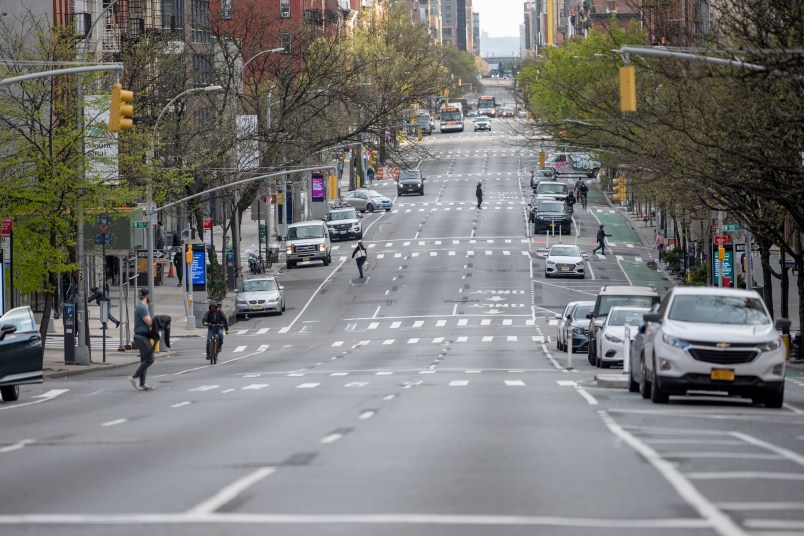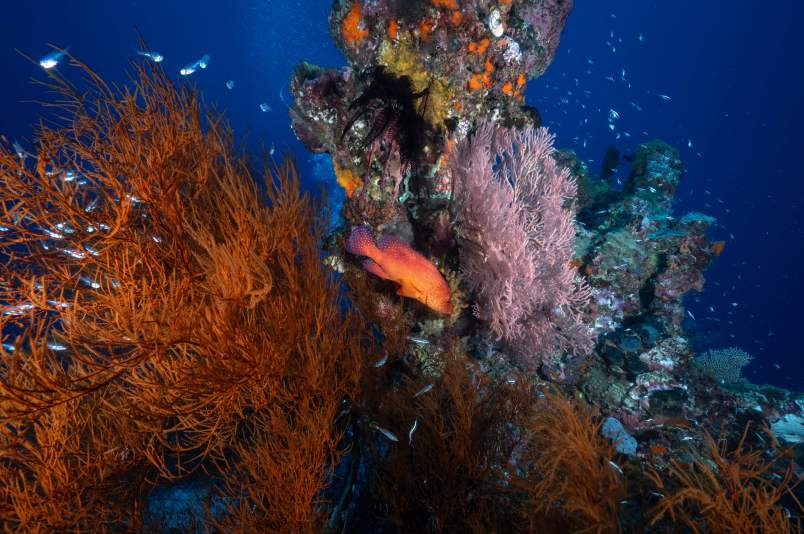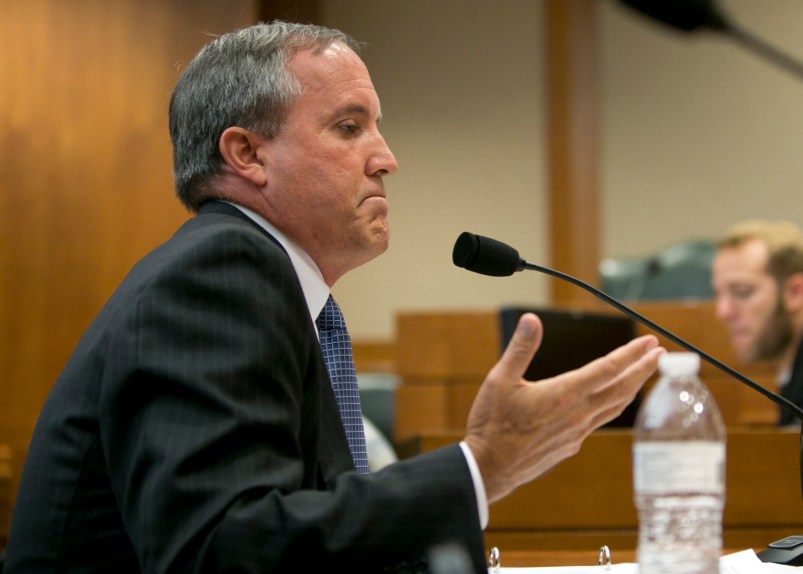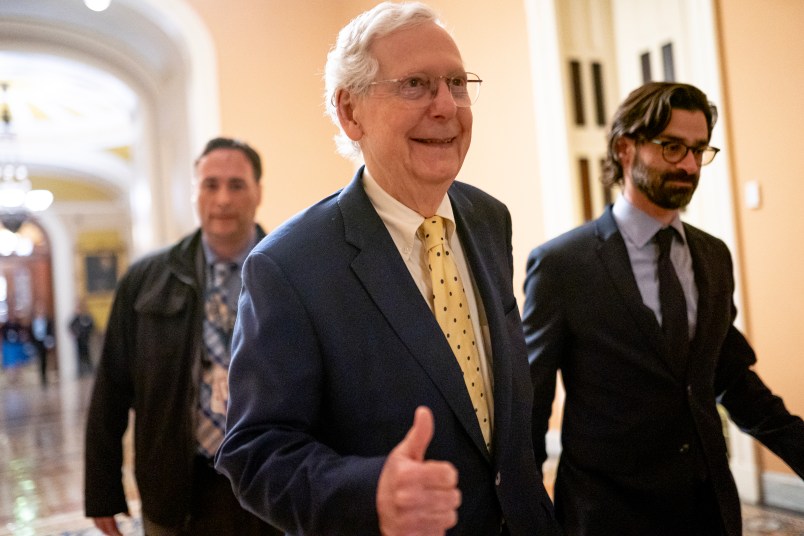 This article is part of TPM Cafe, TPM’s home for opinion and news analysis. It is a part of Covering Climate Now’s week of coverage focused on Climate Solutions, to mark the 50th anniversary of Earth Day. Covering Climate Now is a global journalism collaboration committed to strengthening coverage of the climate story.
This article is part of TPM Cafe, TPM’s home for opinion and news analysis. It is a part of Covering Climate Now’s week of coverage focused on Climate Solutions, to mark the 50th anniversary of Earth Day. Covering Climate Now is a global journalism collaboration committed to strengthening coverage of the climate story.
Some would like us to believe that the reason for COVID-19’s rapid spread is the density of some U.S. cities. These claims are overstated: large cities are hardly the enemy right now, and tight quarters are only one of several factors contributing to the rise in virus cases in these areas.
In fact, the people who live in cities and lead them have shown remarkable leadership and heroism in the face of the pandemic’s threats. While city officials made the tough decisions to shut down early on and have continued to respond to residents’ evolving needs, residents have done their part by keeping hospitals open and running, providing essential services, and just staying home.
This is no surprise to those in the climate space. Cities have long been pathbreakers on climate, setting ambitious targets to reduce greenhouse gas emissions as the federal government actively abdicates any climate leadership. While the Trump administration has used the pandemic’s tumultuous months to roll back vehicle emissions standards, mercury limits and enforcement of existing environmental laws, cities have stepped in to advance policies that put the needs of residents first — whether that’s staying evictions, feeding hungry residents or finding more space for apartment-dwellers to get exercise at a safe distance from one another.
As it turns out, what’s good in a pandemic is often good for the climate, particularly in cities. Policies that reduce greenhouse gas emissions also increase social resilience.
There are important lessons to be learned from how city officials have approached past emissions reduction policies, as well as how they’re navigating COVID-19 policy and will one day craft climate policy post-virus. Here’s a look at how cities are juggling the intersection of these three areas.
People-centered policy
Flattening the curve requires massive collective action, and city officials are required now more than ever to be responsive to their citizens in real time. For example, residents of many dense cities complained they were unable to keep six feet of distance from others on narrow sidewalks and in crowded parks. In response, a movement developed to close some streets to cars, leaving them open to walkers and bikers. Philadelphia closed Martin Luther King, Jr. Drive to traffic, and Oakland, California, closed a whopping 74 miles of roadway. New York City is considering doing the same. These street closures might act as pilots for opening up streets to pedestrians in the future, both as a public space amenity and to alleviate vehicle emissions — a double-win for climate and virus response.
More importantly, city leaders must listen to vulnerable populations when they respond to both COVID-19 and climate change. We’ve long known that lower income and minority communities bear the brunt of environmental injustice and of the impacts of climate change. It’s now clear that there is also a connection between these factors and COVID-19, and people who have had high rates of exposure to air pollution are at a higher risk of death from the virus. City policies to address these twin harms must take the input of vulnerable communities into account. And closing streets to cars does — so long as those closed streets aren’t found primarily in wealthy neighborhoods. Essential workers who need safe commuting options are disproportionately black and Latino, and neighborhoods with poor park access have disproportionately high poverty rates.
Transportation
Fare-free public transit
Late last year, Kansas City, Missouri began offering public transit free of charge to anyone who wanted to ride it. The move is a win-win for climate and equity: it improves the economics of low-carbon transit options and focuses on the needs of lower income communities. Fare-free transit yields additional benefits in pandemic-stricken cities, as it allows riders to enter at the back of the bus without crowding near the driver to pay a fare.
At the same time, public transit has been plunged into crisis by the pandemic. With dwindling ridership leading to a dramatic loss of fare revenue, many public transit systems may be forced to cut service even after the pandemic has abated. Finding a new way to fund public transit that does not rely on fare revenue would stabilize transit service in good times and bad. (And there’s no reason not to subsidize public transportation: American drivers are subsidized to the tune of tens of billions of dollars each year.) Commuters use transit year round, and it is particularly critical to getting essential workers to their jobs during a time like this. This moment of pause should push cities to rethink how their transit systems are structured and financed.
Facilitating bicycle travel
When COVID-19 began its infiltration into U.S. cities in early March, cities like New York saw a spike in cycling as commuters shifted away from the close quarters of the subways. Even now, as many of us remain in our homes, cycling can play a significant role in essential workers’ commutes and in transporting the many more deliveries Americans are having dropped at their doors.
There is also plenty to learn from the past several decades of cycling advocacy. Two important points: first, prioritizing bike safety is paramount; we can’t have cyclists visiting already overburdened emergency rooms. Cities can create temporary, protected bike lanes relatively easily. Second, when designating essential businesses that continue to operate as the rest of the economy stands still, bike shops should be put on the list, right along-side automobile repair shops. Essential workers can’t commute with broken chains.
Single-use plastics
The available information is similarly mixed when it comes to the potential for reusable shopping totes to transmit the infection. Boston and New Hampshire have temporarily banned reusable shopping totes, requiring the use of the very same single-use plastic bags recently banned by cities and states around the country. The evidence that reusable shopping totes can spread the virus is iffy, at best. Any change in policy to bring back the single-use plastic ban should be temporary; a pandemic is no excuse for plastic company lobbyists to permanently undo plastic bag bans.
Nature
By now, most people are grieving their “third places” — the coffee shops, bars, bookstores and more that welcome customers to linger. Parks, hiking trails and other public outdoor spaces provide room for residents to exercise, breathe fresh air and re-set. Nature also helps ease the impacts of climate change. While city residents are under orders to limit gatherings and avoid indoor public spaces, keeping natural areas open, accessible and clean, with clearly-communicated rules about maintaining distance from others, can help alleviate the pains of isolation. Continuing to protect urban nature once COVID-19 has waned will have enduring climate benefits for communities as well.
Buildings
COVID-19 has significantly changed Americans’ work habits, with many now working from home. This isn’t only reducing transportation emissions — building energy needs are changing too. City leaders should encourage building owners to adjust building controls to account for lower building occupancy. Longer term, more Americans may continue working remotely, at least some of the time, and building energy needs will continue to evolve. City policy could require building owners to optimize building energy use, or could even incentivize employers to offer remote work options to help reduce both building and transportation emissions.
What does economic recovery look like?
A lot of the policy choices relating to economic recovery will be made at the federal level, but cities also need to consider their own recoveries. With millions already put out of work because of the virus and state shutdown orders, local policies incentivizing green jobs should be a strong part of any city’s recovery. Cities might try enacting new building energy efficiency laws, which would require skilled, local workers to carry out, or incentivizing new and returning businesses to downtown, walkable areas. On a more macro scale, city leaders should think about the kinds of investment they will lobby for from state and federal recovery programs. Federal or state investment in public transit and renewable energy would help cities financially and environmentally.
We’re reaching the point in the Covid-19 pandemic where many among us would like to find lessons from the virus — maybe even a “silver lining” — and this is no less true in the climate space. Headlines boast reductions in greenhouse gas emissions and local air pollution.
This truth — that pollution is decreasing — is far more bitter than sweet. It is inextricably tied to fewer commuters driving to their jobs and plummeting levels of production. Thousands have fallen victim to the novel coronavirus, and millions more have lost their jobs. A brief dip in pollution levels in no way makes up for these losses.
A devastating, world-wide pandemic is not the way we want to reduce pollution and global greenhouse gas emissions. But from the ashes can rise greener and more equitable cities that are resilient to both climate and public health threats. This is a moment of opportunity to marry the best of city climate policy and virus response in ways that will preserve our planet long after this pandemic passes.
Amy Turner is a Senior Fellow for the Cities Climate Law Initiative at the Sabin Center for Climate Change Law at Columbia Law School.
This essay was adapted from a post on the “Climate Law Blog,” curated by the Sabin Center for Climate Change Law at Columbia Law School.









